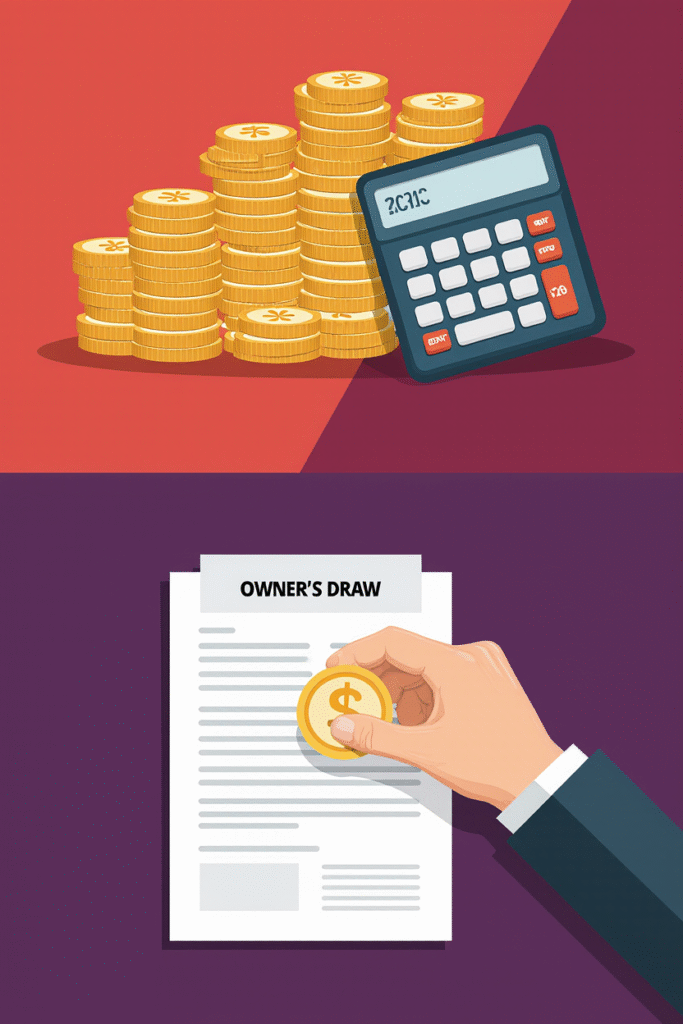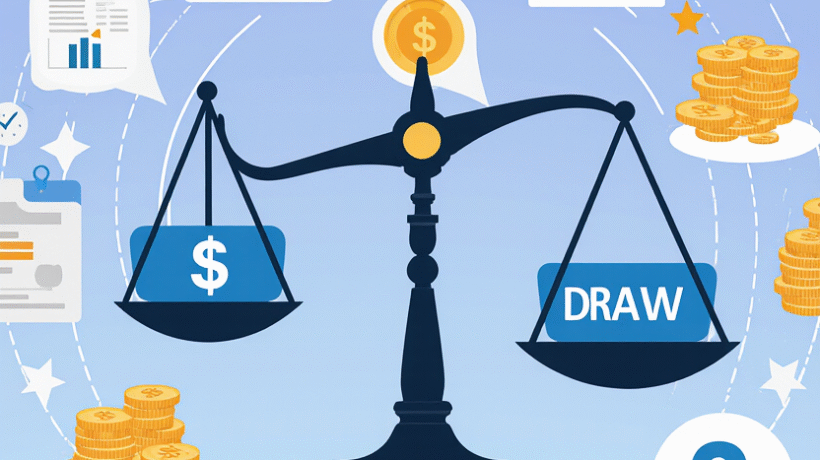Owner’s Draw vs. Salary: What’s Best for Your Tax Situation?
When you’re the boss, how you pay yourself matters — a lot. One of the most important financial decisions small business owners face is whether to take an owner’s draw or pay themselves a salary. Both options come with tax implications that can impact your income, your business, and how much you owe the IRS.
So what’s best for your situation? Let’s break down the difference between salary and owner’s draw, the pros and cons of each, and how to decide which method works for your tax strategy.

What Is an Owner’s Draw?
An owner’s draw is when you take money out of your business profits for personal use. Instead of receiving a fixed paycheck, you simply “draw” from the business account when you need income. This method is common among sole proprietors, single-member LLCs, and partnerships.
Key Characteristics:
- No set schedule or fixed amount
- Not subject to standard payroll taxes
- Must be recorded properly in your accounting
For example, if you’re a sole proprietor, you might take $2,000 this month and $500 the next, depending on business cash flow.
Salary vs. Owner’s Draw: What’s the Difference?
The main difference comes down to how you’re taxed and the legal structure of your business.
- Salary: A consistent paycheck taxed like regular employment income. You withhold income tax, Social Security, and Medicare.
- Owner’s Draw: A flexible withdrawal from business profits, generally not taxed at the time of withdrawal but reported as income on your personal tax return.
When an Owner’s Draw Makes Sense
1. You’re a Sole Proprietor or in a Partnership
Owner’s draw is the default method of paying yourself in these structures. There’s no legal requirement to run payroll, making it easier to manage cash flow.
2. You Prefer Flexibility
One of the biggest benefits of an owner’s draw is freedom. You’re not locked into regular payments and can adjust based on business performance.
3. You Want to Avoid Payroll Hassles
Running payroll means tax filings, W-2s, and compliance. With draws, you sidestep the red tape — though you’ll still need good bookkeeping.
Pros and Cons of an Owner’s Draw
✅ Pros:
- Simple and flexible
- No payroll processing
- Ideal for new or fluctuating businesses
❌ Cons:
- No tax withholding — you must pay estimated taxes
- Not considered “earned income” for retirement contributions
- Can complicate accounting if not tracked properly
When Taking a Salary May Be Better
1. You Have an S Corporation or C Corporation
In many corporations, especially S Corps, the IRS requires that owners who work in the business pay themselves a “reasonable salary.” You can’t just take draws.
2. You Want Predictability
Salary gives you a stable income — great for budgeting, mortgage applications, and peace of mind.
3. You Want Retirement or Benefits Eligibility
A salary counts as earned income, which is necessary for certain retirement plans (like a solo 401(k)) and accessing employee benefits.
Tax Implications of Salary vs. Owner’s Draw
- Owner’s Draw: You pay income tax on your share of the business’s profit — not on what you withdraw. However, you’re responsible for self-employment tax (15.3%).
- Salary: Taxes are withheld automatically, and your business also pays half of your Social Security and Medicare taxes.
Choosing the right payment method can be a smart part of your tax planning strategy.
Owner’s Draw Tax Tips
- Track All Withdrawals
Don’t treat your business like a personal piggy bank. Keep accurate records of every draw. - Budget for Estimated Taxes
Since there’s no withholding, plan for quarterly payments to avoid penalties. - Work With a Tax Pro
An accountant can help you structure your compensation in a tax-efficient way — especially if you’re considering switching to an S Corp.
Final Thoughts: Which Is Right for You?
There’s no one-size-fits-all answer. Your business structure, income goals, and tax strategy all play a role.
- If you value simplicity and flexibility, an owner’s draw might be the way to go.
- If you want predictability, retirement contributions, or are running an S Corp, paying yourself a salary is likely better.
Either way, understanding your options can save you thousands at tax time — and keep your business finances healthy.
Need help navigating your taxes? Check out our guide: Tax Planning Basics: Essential Guide to Tax Strategies & Savings





